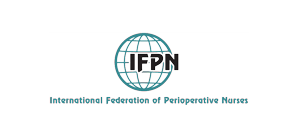ΒURN MANAGEMENT IN PEDIATRIC PATIENTS
Kostantinos Doumenis, Maria Polikandrioti, Georgios Vasilopoulos, Evangelos Dousis, Foteini Giannikou, Ioannis Koutelekos
Sunday, October 1, 2023
Publication year:
2023
Authors:
- Doumenis Kostantinos , Postgraduate Student MSc: Treatment and Care of Trauma and Ulcers, Department of Nursing, University of West Attica, Athens, Greece
- Polikandrioti Maria, Assistant Professor,Department of Nursing,Technological Educational Institute of Athens
- Vasilopoulos Georgios, Assistant Professor, Faculty of Health and Caring Professions, Department of Nursing, Athens University of Applied Sciences, Greece
- Dousis Evangelos, Assistant Professor, Department of Nursing, University of West Attika
- Giannikou Foteini, Sectoral Director of Surgical Section G.N.N. ‘’Agios Panteleimon’’, Nikaia, Greece
- Koutelekos Ioannis, PhD, Associate Professor, Department of Nursing A',Technological Educational Institute of Athens
Keywords index:
Pages: 385-398
Abstract:
Introduction: Children usually suffer partial thickness burns. The management of the burn includes wound preparation, wound coverage with dressings and post-traumatic care. An ideal dressing should ensure that the wound remains moist, but not too wet.
Aim: The investigation of the management of burns in pediatric patients. Methodology: This is a systematic literature review. The literature search was performed in the PubMed and Google Scholar databases. We used research articles that had been published in the last decade, were written in English and Greek, had access to the full text of the article, and concerned a pediatric population. Results: Of the 5235 articles found, 10 were finally used. Adjunctive negative pressure therapy accelerates re-epithelialization in children with minor burns. Dressings containing silver, calcium, or zinc have similar effects on non-infectious burns compared to dressings containing only nitrofurazone and are superior in efficacy to plain paraffin dressings. Silver dressings require fewer changes, promote early burn healing with less hypertrophic scar formation. Music therapy significantly reduced discomfort only in children over 5 years of age, while in children under 5 years of age expert-guided or directed medical play reduced levels of pain and discomfort during patch changes. Conclusions: Although the initial price of dressings with silver, calcium or zinc is more expensive than plain dressings, ultimately the treatment of burns with these dressings is cheaper because children stay fewer days in the hospital, need fewer changes and develop fewer complications. Silver dressings should not be considered the gold standard in non-infectious partial-thickness burns in children.
Download PDF


